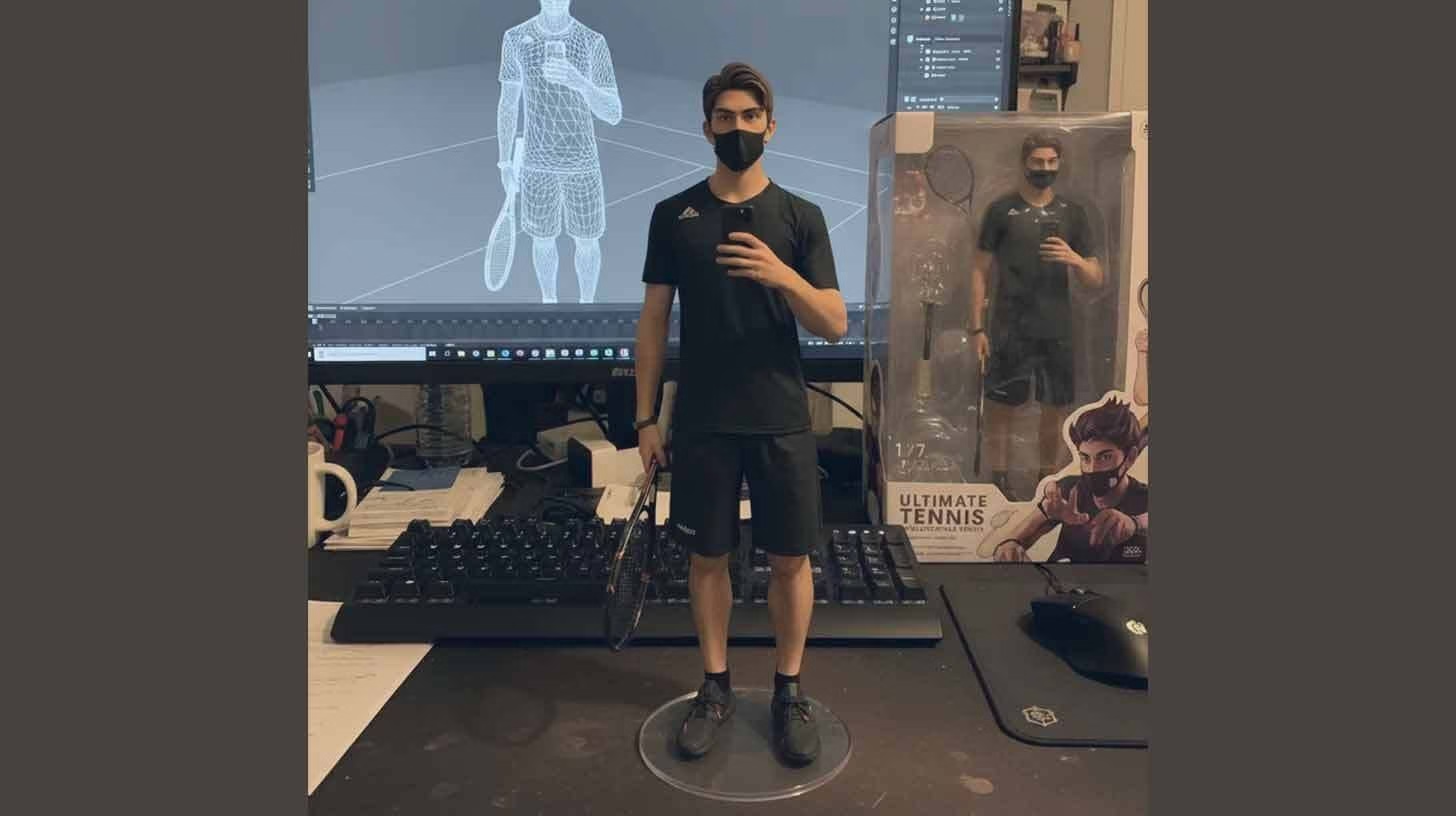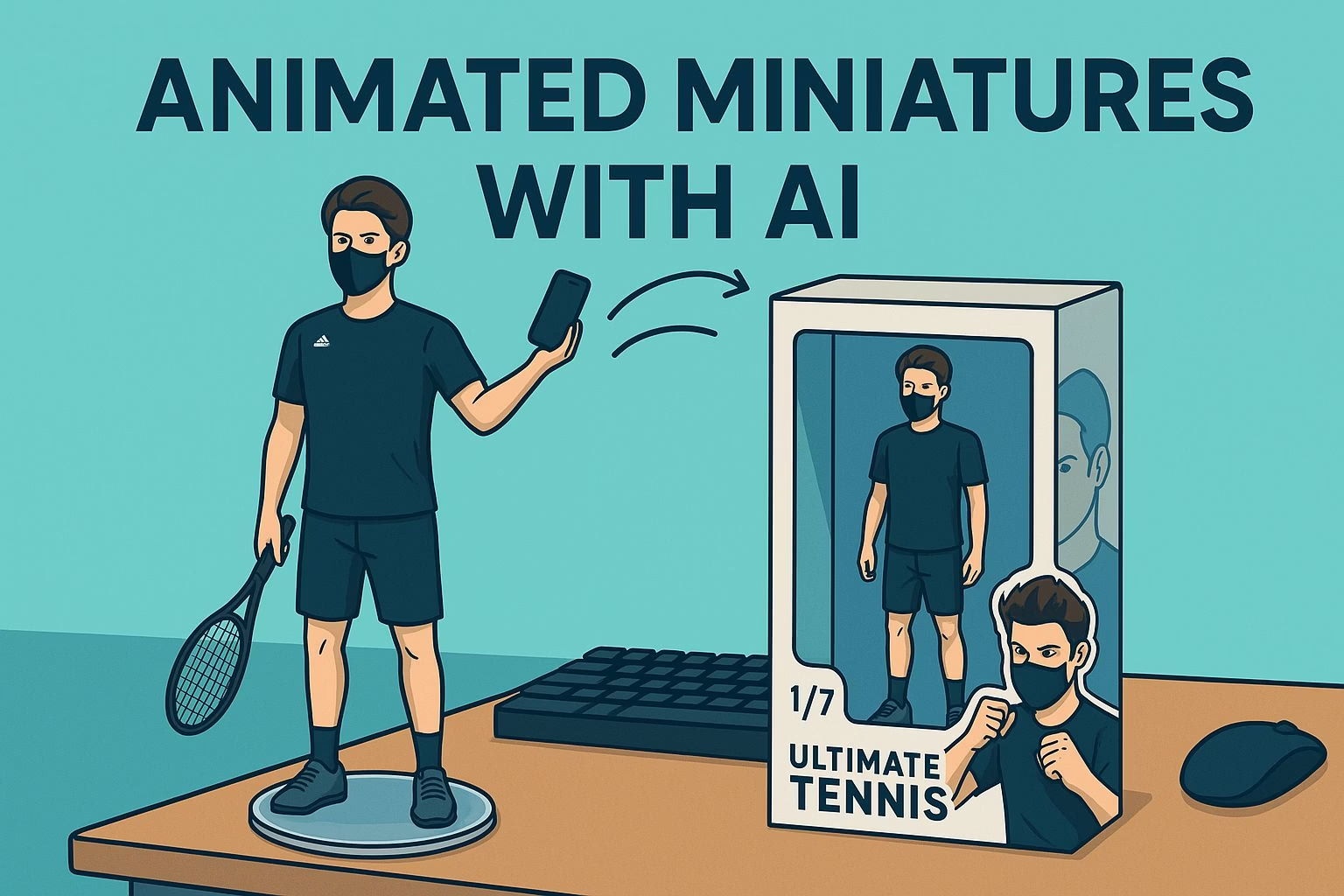How to Create Your Own Animated Miniatures with AI
Key takeaways
- Use Google Gemini with the Nano Banana tool to create figurine-style renders from photos.
- Upload the figurine image to Luma Labs to animate with clear, step-based prompts.
- Be specific with camera angles, timing, and movements for smoother results.
- Miniature animations are effective for product marketing, social content, and personal branding.
Creating a miniature version of yourself or your product with AI sounds complex, but the process is more approachable than most people expect.
With tools like Google Gemini and Luma Labs, anyone can turn a simple photo into a figurine-style design and animate it for marketing or social content.
The appeal is obvious. Brands can showcase products in unique ways, and creators can design collectibles or stylized avatars without expensive 3D modeling.
The animations can be tailored for TikTok clips, Instagram reels, or even ad campaigns. What used to take a skilled 3D artist days can now be done in under an hour.
Here’s what makes this workflow practical: Gemini’s Nano Banana tool specializes in turning flat images into figurine-like renders, while Luma Dream Machine lets you animate them with natural camera angles and movements.
Combining both creates content that looks polished and professional.
For example, imagine uploading a selfie into Gemini, then holding a finished “figurine” of yourself on a desk with toy-like packaging.
You could take that render into Luma and animate it smashing a phone toward the camera for a TikTok ad.
A small business could do the same with their product, turning a coffee cup or sneaker into an animated desk toy for eye-catching promos.
Step-by-step guide to create an AI miniature
The first part of this workflow is handled in Google Gemini.
Their Nano Banana tool generates a figurine-style render from a single image.
The key is to be specific with prompts and to start with a clear photo.
-
Open Gemini, click Create images, and enable the Nano Banana tool.
-
Use this starter prompt: “First ask me to upload an image, then create a 1/7th scale commercialized figurine of the characters in the picture in a realistic style in a real environment. The figurine is placed on a computer desk with a transparent acrylic base and a toy packaging box.”
-
Upload your reference photo. This could be a portrait, product photo, or even a group shot if you want multiple figures.
-
Gemini will return a scene showing the figurine on a desk setup, complete with a monitor and packaging.
Actionable example: a café owner can upload a branded cup image, then get a desk figurine that looks packaged like a collectible.
This image can then be used as part of seasonal campaign graphics.
When setting up, experiment with different desk accessories in the background. Adding a laptop or tablet can make the figurine look more realistic in its environment.
How to animate the figurine with Luma Labs
Once you have the figurine render, the next step is giving it motion. Luma Labs makes this easier through its Dream Machine animation system.
-
Go to Luma Labs and create a New Board.
-
Upload the figurine image from Gemini.
-
Add prompts that describe movement and camera perspective. For example: “Front camera view of this figurine. He takes the phone, tosses it up like a serve, then smashes it toward the camera.”
-
Fine-tune your animation by specifying camera angles (close-up, dolly-in) and timing (2–3 seconds for the throw, 1 second impact).
Actionable example: a sneaker brand can animate their figurine running across the desk and jumping off the edge, perfect for a product teaser clip.
Being precise matters. Instead of “the figurine waves,” try “figurine raises right hand slowly, waves twice toward the camera.” That level of detail helps Luma produce smoother results.
Pro tips for better results
The difference between a rough output and a polished animation usually comes down to how specific the inputs are.
With Gemini and Luma, precision in both imagery and prompts makes the results far more usable.
Start with a clean, high-quality photo. Avoid group shots if you only want one figurine, since extra faces or objects can confuse Gemini.
Make sure lighting is even, as harsh shadows in the reference photo often carry over into the figurine render.
When writing animation prompts in Luma, think like a director.
Break down each movement into short, clear steps. Instead of asking for “figurine jumps and waves,” try splitting it into “figurine bends knees, jumps upward, waves right hand twice.”
Add camera instructions alongside the motion so the perspective looks intentional.
Actionable example: if you want a figurine boxing move for a fitness brand ad, write:
“Close-up view. Figurine in boxing stance. Left jab forward for 1 second, right hook follows immediately.”
This level of timing detail produces a smoother clip.
Creative use cases for marketing and social media
Once you have animated figurines, the opportunities multiply. These clips grab attention because they look like collectibles brought to life, which makes them perfect for short-form platforms.
Small businesses can use figurine animations as product teasers.
A local coffee shop could show a mini cup figure serving coffee to a desk, while a gaming store could animate a figurine of their mascot holding game controllers.
These become memorable visuals that stand out in crowded feeds.
Creators and influencers can use figurine animations as part of personal branding. Imagine your miniature self performing a dance move or holding a prop related to your niche.
Clips like these add humor and uniqueness to TikToks or Instagram reels.
Marketers can repurpose figurines into ad campaigns. Instead of flat product photos, ads can feature animated desk toys acting out short, playful scenes.
This style appeals especially to younger audiences used to collectibles and memes.


